by Valentina Biondini, art and literature amateur
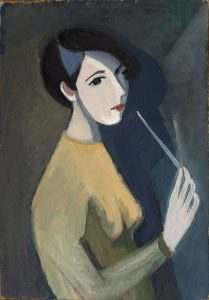
Katy Castellucci’s name rings out loud in Who’s Next? and 20th century Italian art. In fact, she was one of the most significant artists of that heterogeneous group of painters active in Rome between the 20s and 40s of the 900s century that goes by the name of Scuola Romana. Painter, portraitist and weaver, she best represented this unconventional artistic current thanks to an extreme sensitivity and a multifaceted and original visual taste. Her shy and restless character is hidden behind the enchantment of her works, which greatly influenced the Italian art of that time.
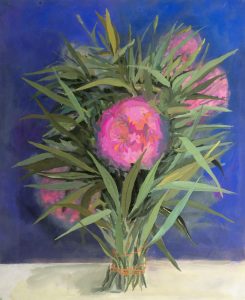
Caterina (called Katy) Castellucci was born in Laglio, on Lake Como, in 1905, but in the 20s she moved to Rome. From a very young age she demonstrates an innate artistic talent and a completely innovative style. In 1926 she went with her sister Guenda to Paris, where she stayed for two years. Here she is first interested in the dance world, and then transferred her aesthetic ideals into painting, where she manages to combine the sensitivity and sensuality of the pictorial touch in simple and everyday contexts. Once back in Rome, she came into contact with the so-called Roman School, active between the 1920 and 1950, which included the most famous Mario Mafai, Renato Guttuso, Alberto Zivieri and Francesco Trombadori. In this period, Italian art is in a phase where it seems to have no national borders, and the exchanges with Paris are very frequent. The Scuola Romana, on the other hand, defends the independence of art and, although it is a movement with very different styles, it tries to create a type of art in opposition, or rather, an alternative to that of clear fascist propaganda. Inside, in fact, we pass from the realism of Antonio Donghi, to the visionary worlds of Mazzacurati, up to the modernity of Scipione. While the elements of continuity and affinity between these artists can be found in the deep bond with the city of Rome, in the cult of the ancient, as well as in the experimentation of a more intimate, personal and direct dimension of art.
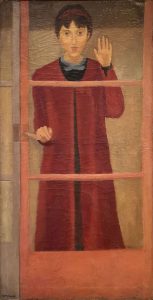
In 1932, Castellucci exhibited for the first time at the III Sindacale with two works. However, the exhibition that really marked her entry into the world of art was her first personal at the Galleria della Cometa in 1936, where she exhibited together with Adriana Pincherle, sister of Alberto Moravia. Among her works stands out the very delicate and very famous “Self-Portrait” of 1935, now preserved in the Museum of the Roman School of Villa Torlonia. During the 40es her painting evolved, becoming more animated and compact than the first and more sober past compositions. In fact, her line acquires greater density and becomes more moving, the lights and shadows more accentuated, the relationship between the figures and the environment appears incisive, the nudes are mixed with light, while the brushstrokes become more consistent and seem give the bodies greater solidity and sensuality. At the same time, in the landscapes and still lifes, the shades of red, green, blue and purple, despite still referring to Mafai’s tonal compositions, denote how progressively her painting is becoming more solid and elegant.
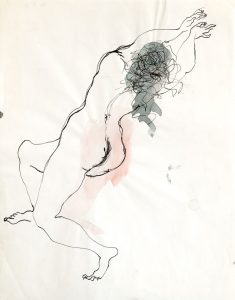
In the post-war years she devoted herself to teaching, first in Modena, and then at the Institute of Applied Arts in Rome. A neo-cubist phase follows, which derives mainly from a generalized infatuation of most Italian artists for this movement. The resulting works show how the artist proceeds in an original way, through simplifications, clean cuts and essential colors, somehow going beyond the controversy between realists and abstractionists that agitated the Italian art world at that time. The neo-cubist phase was followed by some more experimental abstract attempts, but created without real exhibition intentions. The most frequent themes of her heterogeneous artistic production are flowers, painted with the gouache technique, and with dense and luminous shades. Then the portraits, landscapes, self-portraits, still lifes, female nudes and abstract compositions of recent years. In portraits and self-portraits the image is always close up, as if it were a vivid presence, and therefore not fixed on canvas, with which the dialogue still remains open. Furthermore the expressions denote considerable attention to the psychology of the subject.
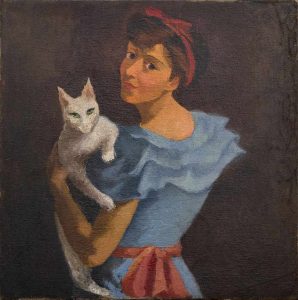
The self-portraits are a separate chapter. In these works, Castellucci is represented with large, dark and penetrating eyes, but always in different poses. In some cases, these close-ups feature warm, vivid colors. In others colder and gray tones. This tonal and plastic variety of the self-portraits summarizes the changing aspects of her character: from melancholy, to the desire to hide behind disguises and make-up, up to familiar and domestic female images. Among other things, we should remember that she painted directly, without a preparatory drawing. For this reason in the plasticity of the figure, rendered through colour, the eyes seem to fix the spectator and chain him to the scene, recalling the feminine and melancholy atmospheres of the artist’s inner universe. After all, color is the essential element of all her paintings. So, its use goes beyond pure tonal relationships and, through dense and flat layers, it achieves a compositional quality of the system, as well as a precise formal vocation.
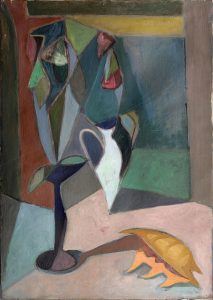
Aware of the deep changes affecting painting, from the end of the 50s Katy Castellucci reduces her commitment to this area and, despite continuing to be invited to exhibitions, renounces to participate. The esteem she now enjoys among her colleagues and the acknowledgments from critics does not make her give up the choice to abandon the world of painting. In reality, the precise reasons that lead to this decision are unknown. Of course we should not forget that for a woman the painting environment was a difficult place to establish herself. However, it is possible that the artist was now convinced to continue her journey, going beyond an experience where she had already given her best.
Thus teaching becomes her main activity. At the same time, she does not fail to experiment and put an inexhaustible creative imagination to the test. Infact, shortly thereafter she finds the “drawing on fabric” section and begins to work with scenography and theatrical costumes. If the painting is set aside without regrets, instead drawings accompany her artistic career until death, in Rome, at the age of eighty, in December 1985.
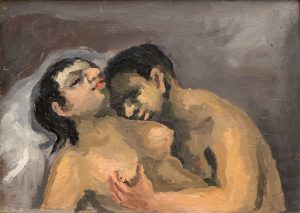
Many are her drawings of great quality, which among other things can be considered independent from painting itself. In these works the nuanced and shaded line of the early years, albeit with continuous variations, gradually becomes more incisive and vibrant, until it reaches an essential linearity. Furthermore, her surprising creative intelligence and good taste lead her to start designing for fashion houses as well, making shoes, bags and furnishing items. She is therefore an eclectic and talented artist who, while adopting always different forms, mediums and styles, has never stopped dedicating herself to art. Her approach was sometimes loud, sometimes more subdued. And her path, made up of continuous and unprecedented experiments, has always expressed her own colorful and heterogeneous inner world.